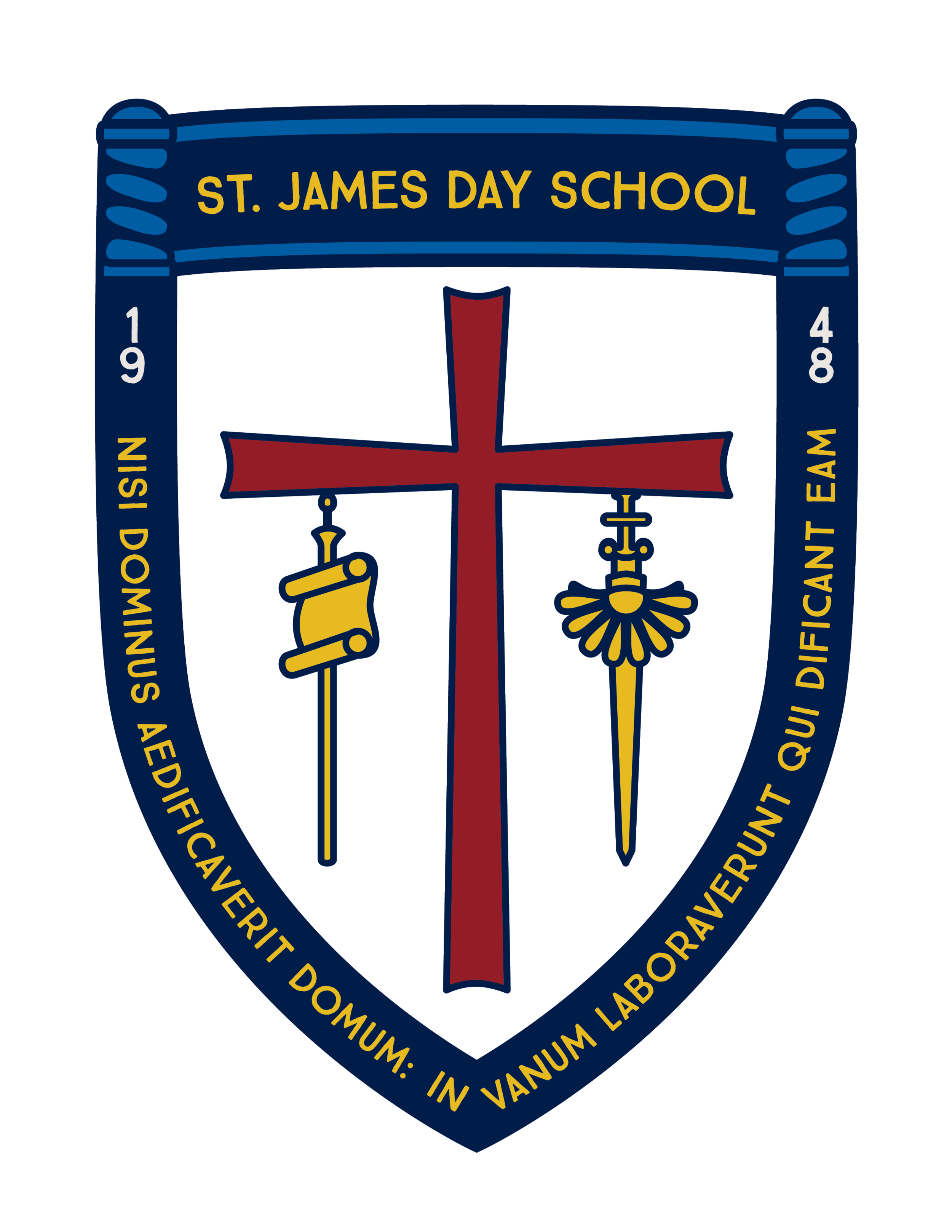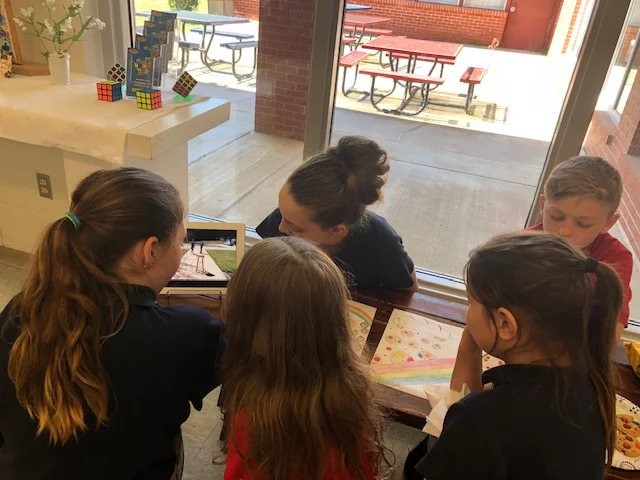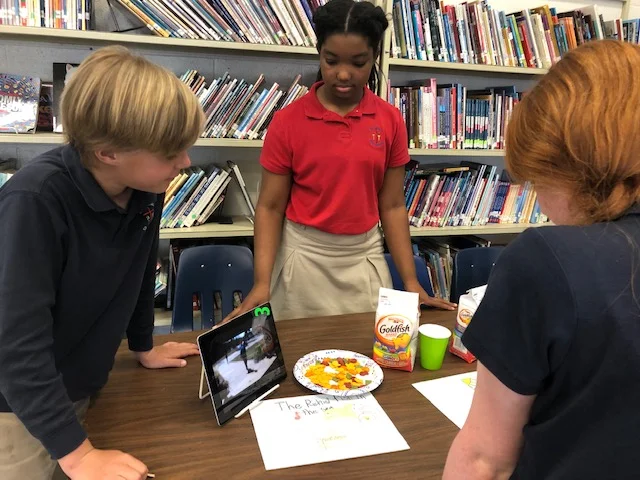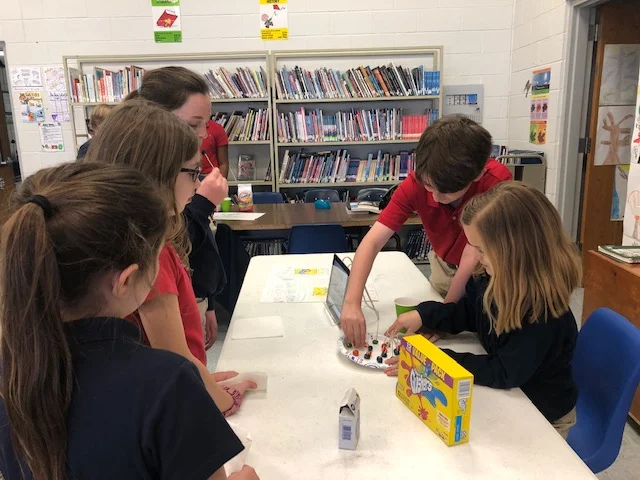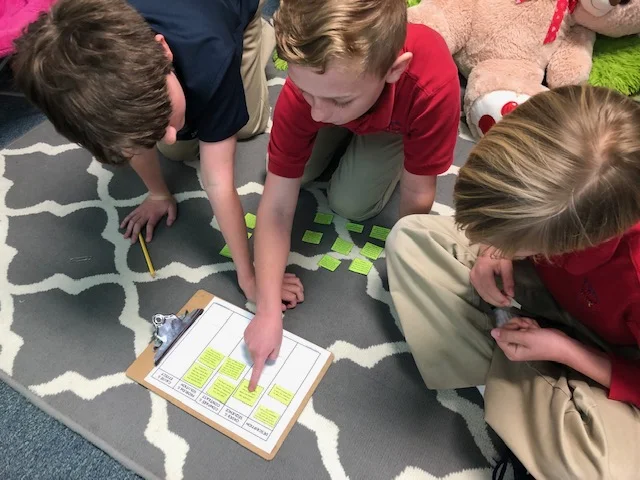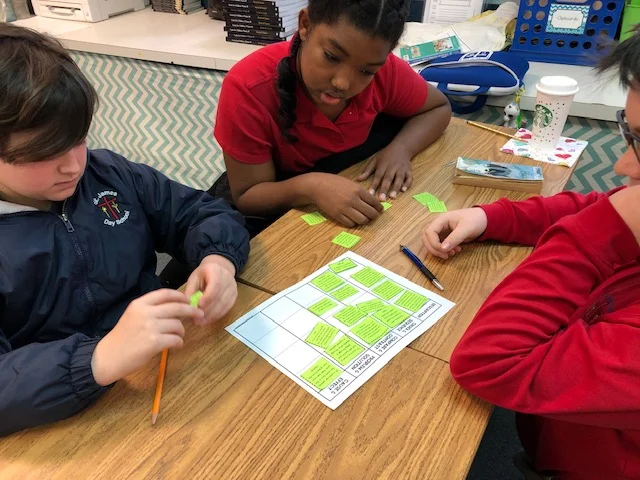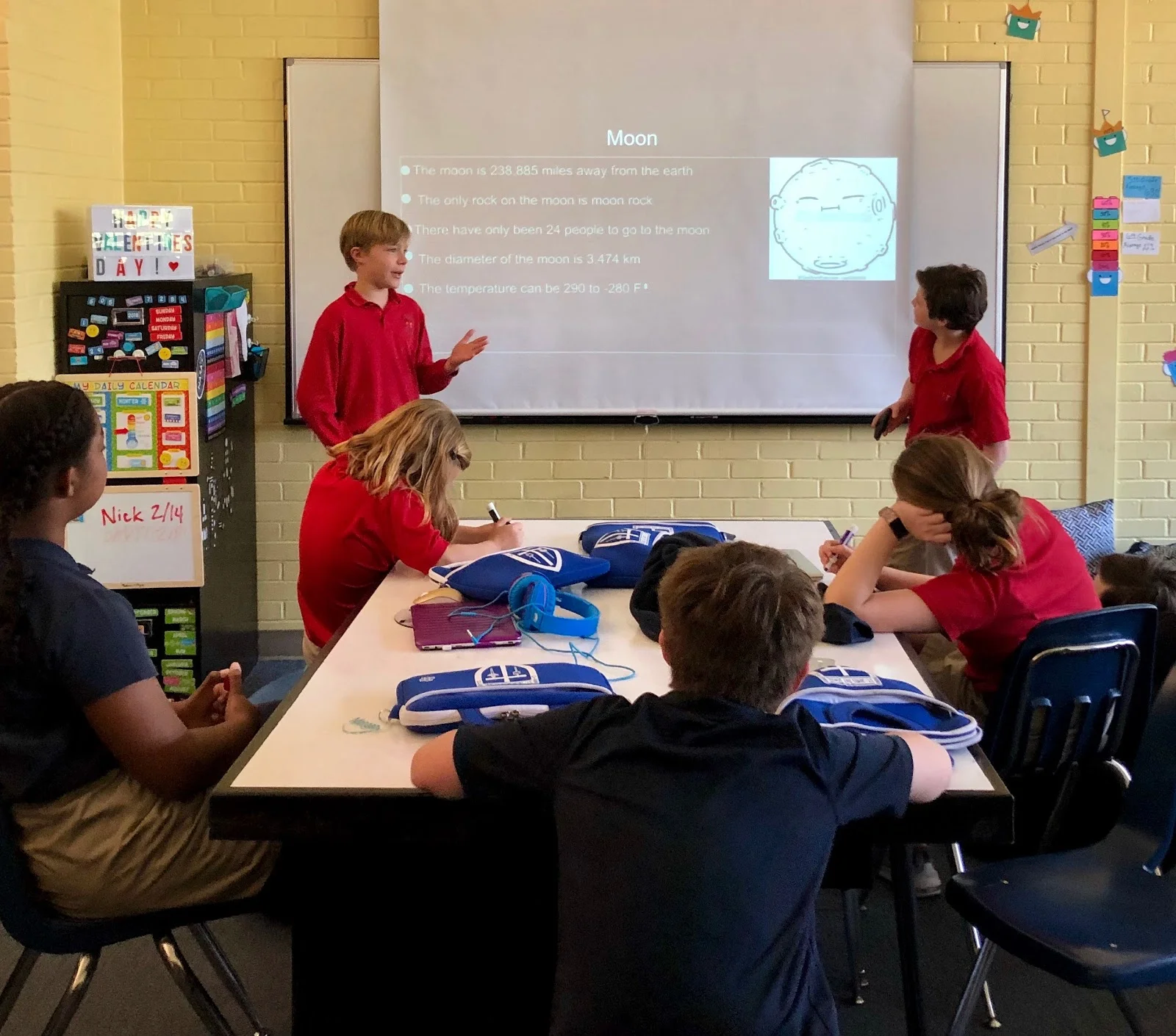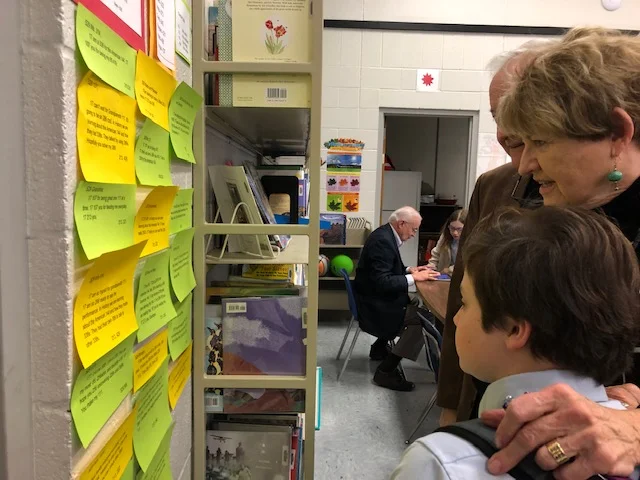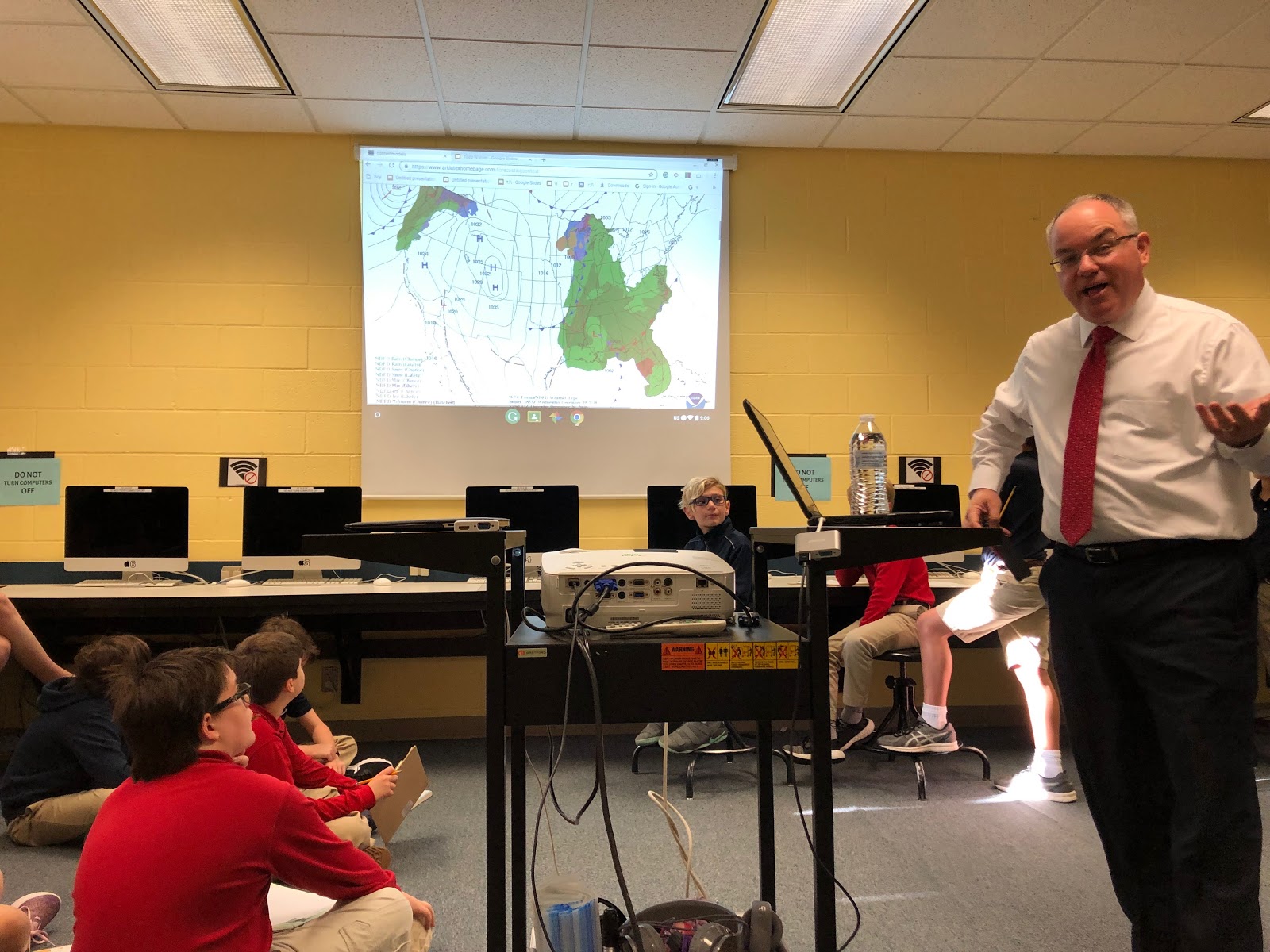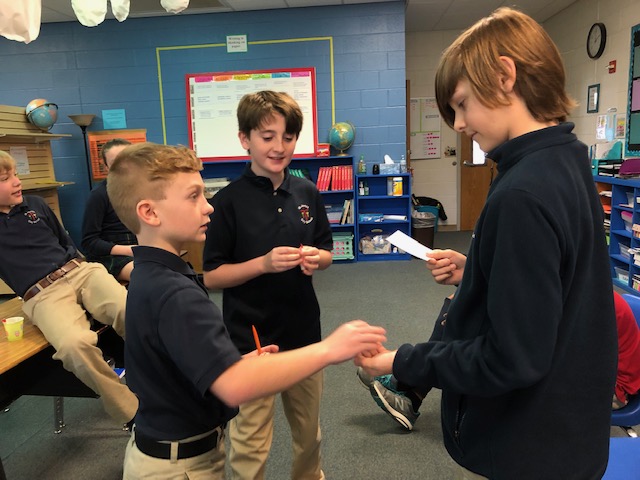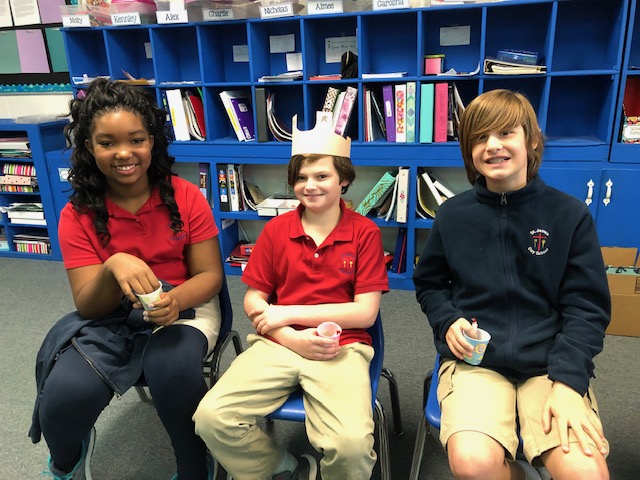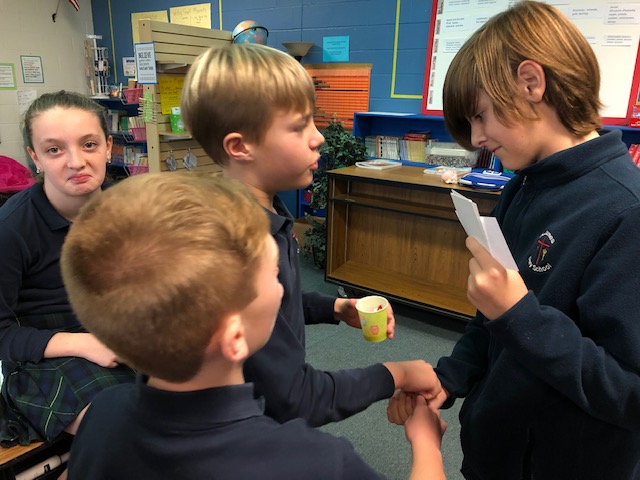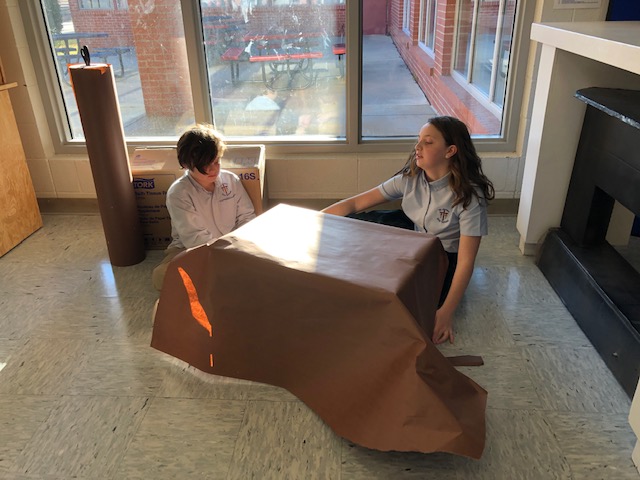LANGUAGE ARTS AND HISTORY:
Who wants some snacks?
It’s always fun to end our persuasive writing unit with an advertising lesson. Advertising is probably the most recognized form of persuasion, and our lives are bombarded by it, especially now that we live in the digital age. In their final mini-project, 5th graders were tasked with retaining the essential principle of persuasion-- convincing your audience to want what you have to offer-- and applying it to food. What better product to advertise than tasty snacks? What better audience than 4th graders?
Students paired off (with the exception of one sweet student whose partner was ill) and chose a snack well-liked by most children-- Fruit Gushers, Goldfish, Rainbow Chip Deluxe cookies, and Fritos. They conducted taste-test research to write their slogan and design three different ads-- a billboard, a magazine ad, and a video. Then, the class presented their ad campaigns, complete with product samples, to the 4th grade class. The 4th graders, suitably impressed with the colorful ads and creative videos, were most convinced by two snacks-- Goldfish (voted favorite) and Rainbow Chips Deluxe cookies (voted most persuasive ad). Overall, 5th graders have learned that persuasion is, indeed, an art form, and that they can write persuasively if they believe in their opinion, conduct solid research to support their opinion, and know their audience.
